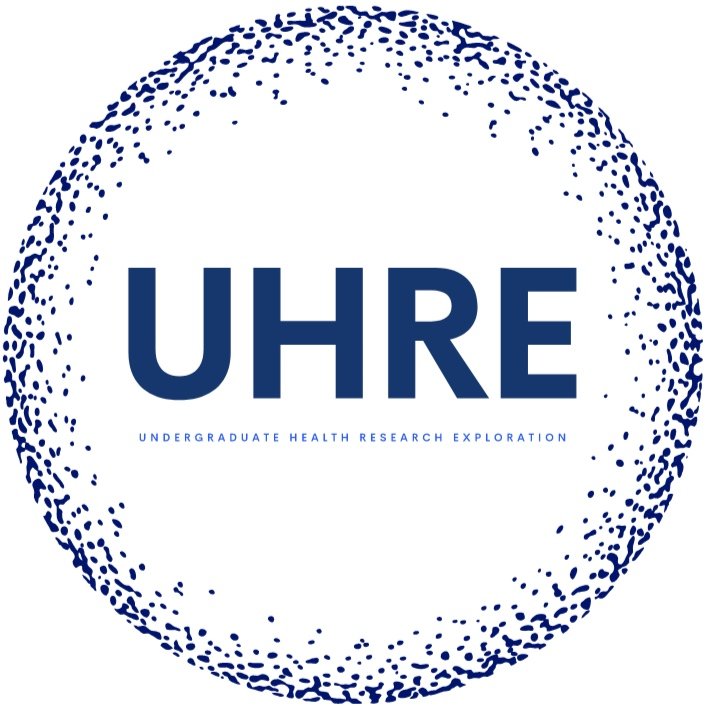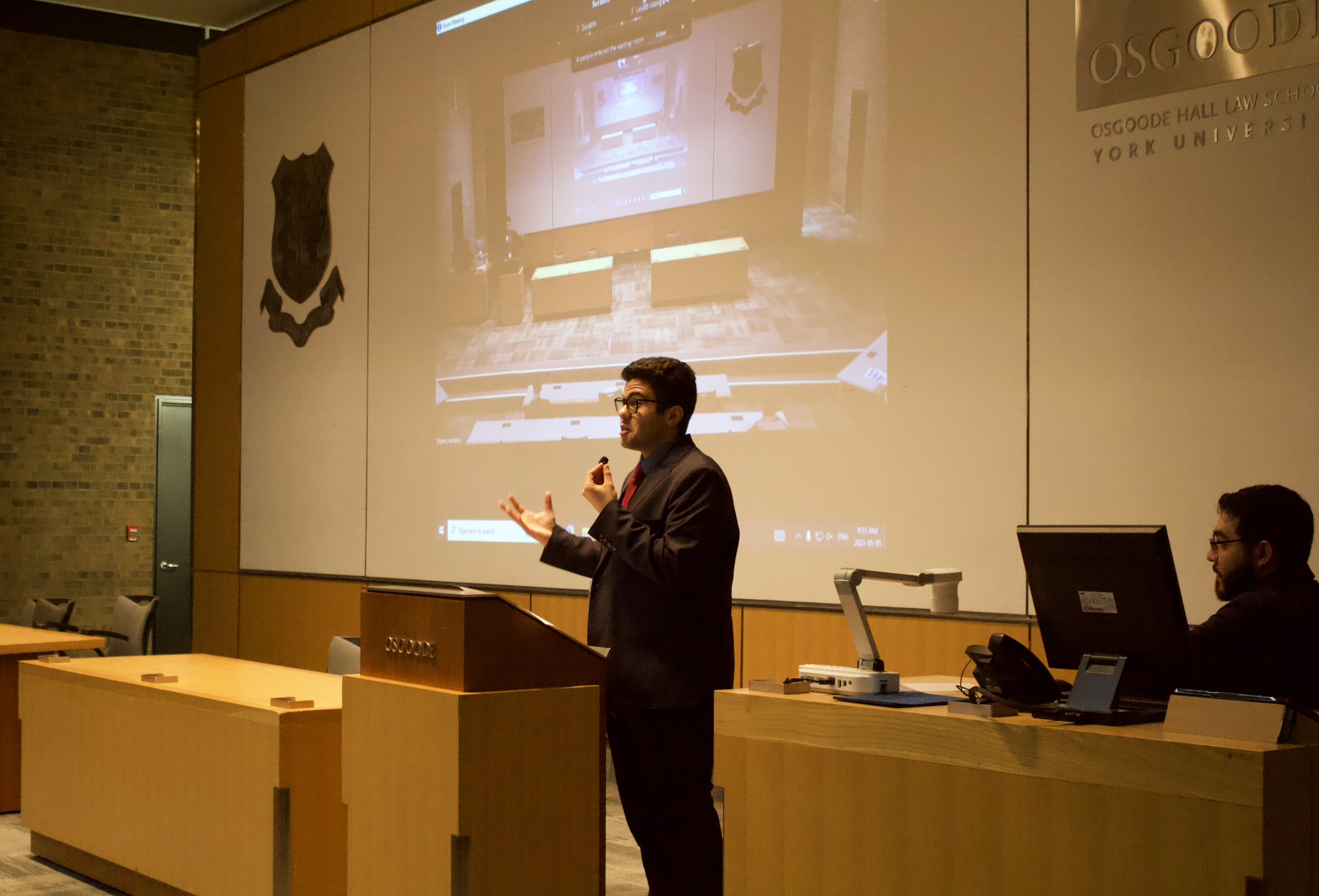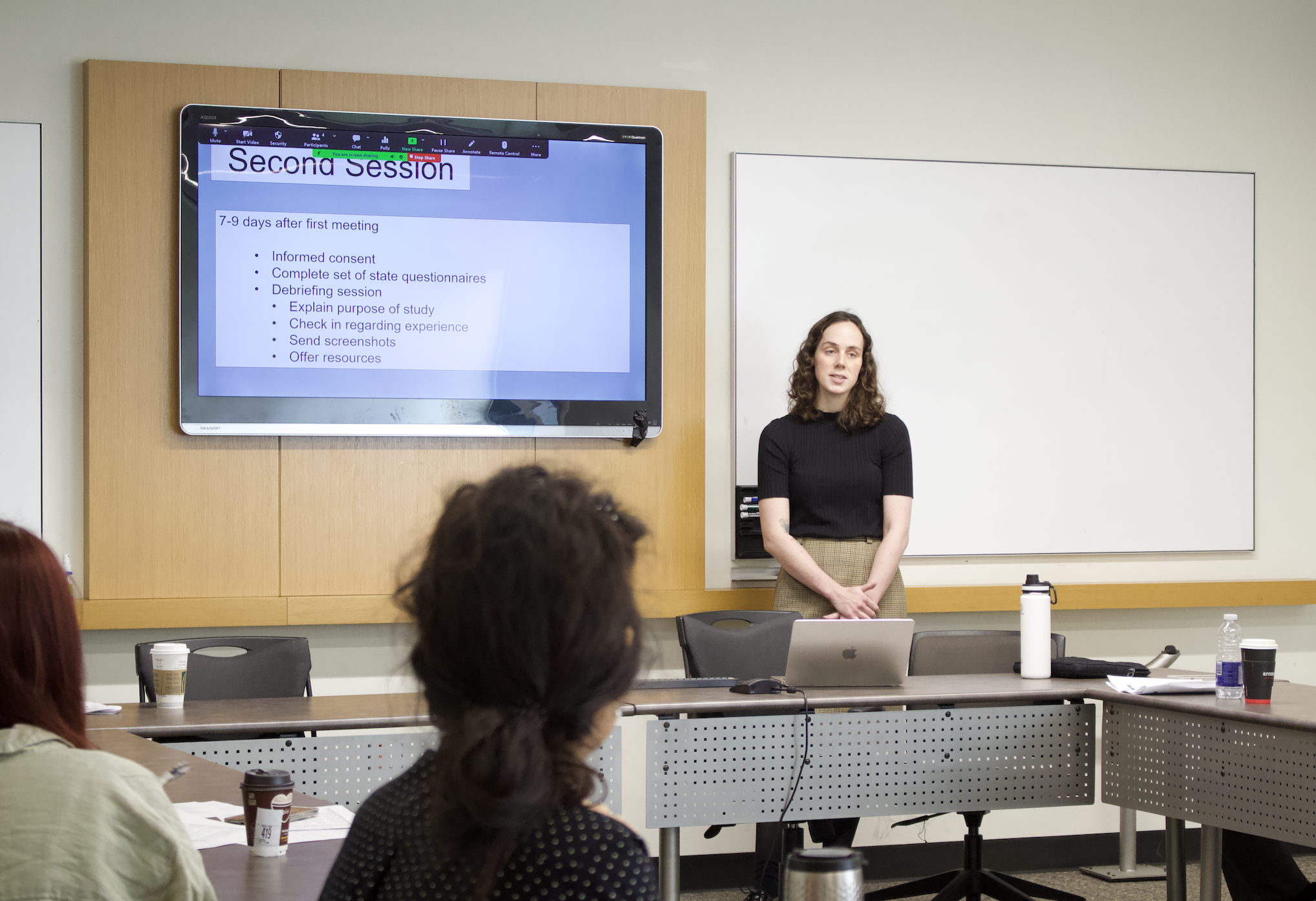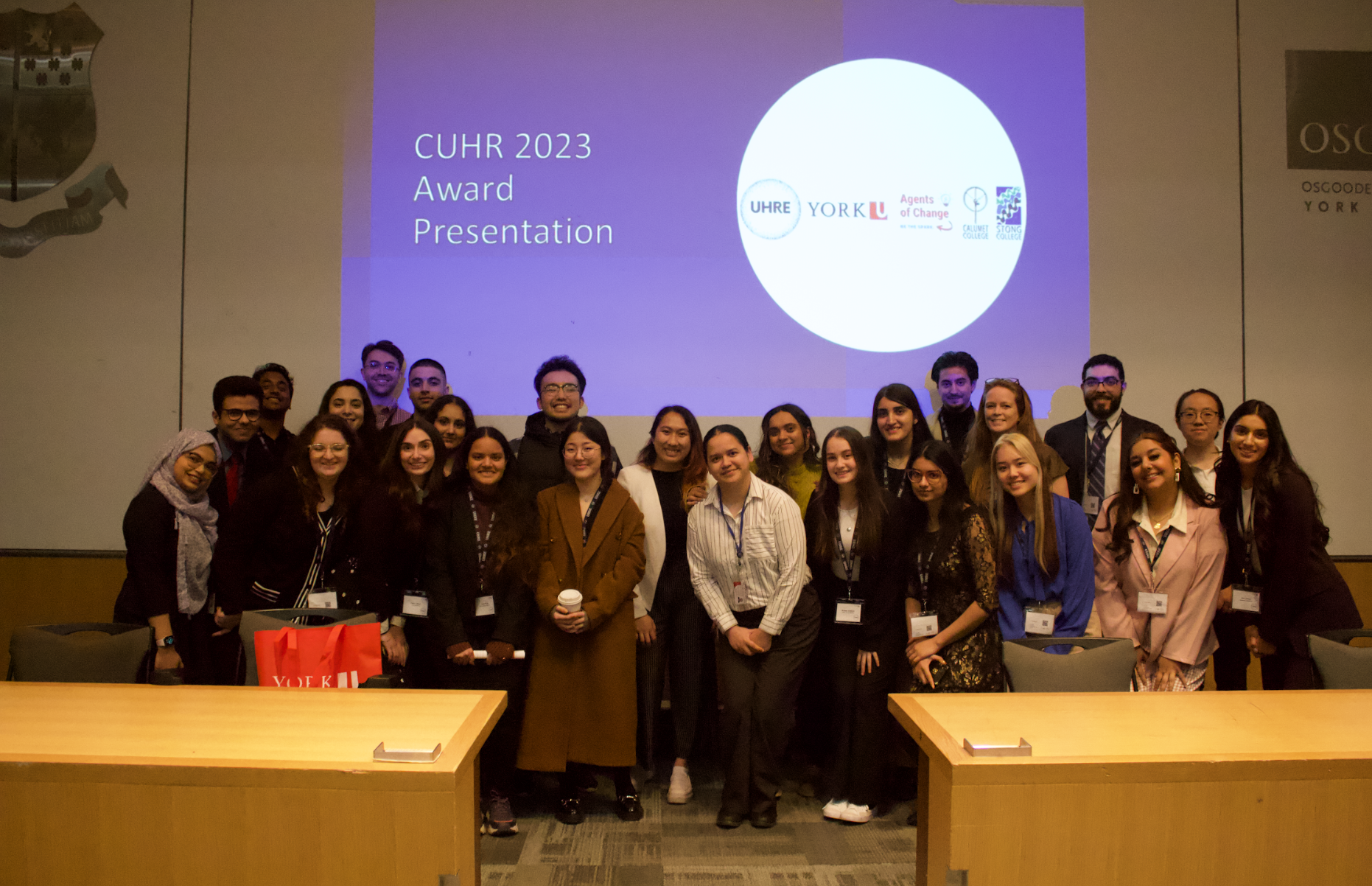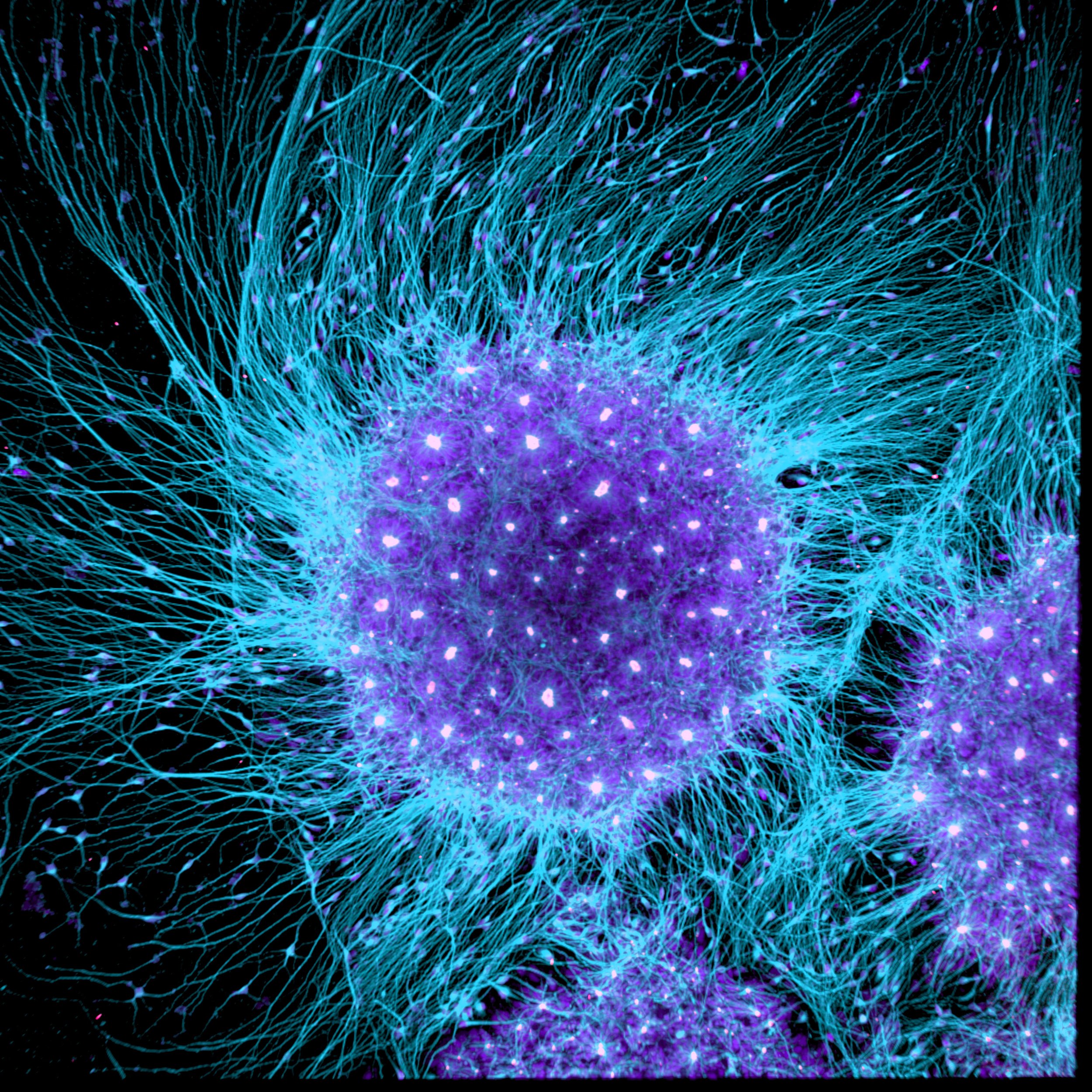
The Conference for Undergraduate Health Research (CUHR) 2023
Canada’s first Health-Focused undergraduate research conference.
CUHR 2023 Conference Theme: Bridging the Gap: Integrating Interdisciplinary Approaches in Health Research
On May 5th, 2023, UHRE ran its second annual Conference for Undergraduate Health Research (CUHR) with over 80 presenters from 10+ nations.
Last year's Undergraduate Research Conference at York University was nothing short of spectacular, marking a vibrant celebration of academic exploration and innovation. Bringing together bright minds from across the globe and our own esteemed university, the event provided a platform for undergraduate students to showcase their groundbreaking research endeavors.
The atmosphere buzzed with excitement as participants from diverse disciplines shared their findings, sparking intellectual conversations and fostering a sense of collaborative discovery. The conference was a melting pot of ideas, where students exchanged insights, challenged perspectives, and forged connections that transcended geographical boundaries.
The event showcased the remarkable breadth and depth of research being conducted by undergraduates, demonstrating that innovation knows no limits. From groundbreaking scientific breakthroughs to socially impactful projects, the presentations were a testament to the passion and dedication of the next generation of scholars.
Conference Awards
-
Valued at $500, and awarded to a CUHR presenter whose research and presentation were exceptional and addressed issues/topics related to health equity.
The winner of the Faculty of Health Dean’s Excellence Award for Research in Health was Leyao Wang.
You can find their abstract below:Presenter: Leyao Wang
Title: Comparing the Emotional Charge of Bilinguals’ Languages Based on Their Linguistic Similarity
Abstract: As more than half of people on earth speak more than one language, understanding the reality of bilinguals is essential. Many bilinguals reported that during psychotherapy sessions, they felt a level of emotional detachment when speaking in their second language. However, there are over 6,000 languages in the world and bilinguals' linguistic situations are far from uniform. This study explores how linguistic similarity between bilingual individuals’ first and second language affects the level of emotional activation experienced in each language. We compare the emotional reactions of English second language speakers with either French (high linguistic similarity) or Mandarin (lower linguistic similarity) as their first language. Thirty French-English and 31 Mandarin-English bilinguals were asked to do the emotional Stroop task: name as fast as possible the ink color of words that are either neutral or emotionally charged (e.g., taboo) presented in both languages. Mandarin participants reacted slower when they saw taboo words written in their first language, compared to French participants. These results are discussed in light of differences among different groups of bilinguals based on their mother tongue’s linguistic distance from English and their triggered emotional intensity. It is recognized that other factors, such as language learning history and context, can also influence emotional activation in different languages.
-
Valued at $500, and awarded to a CUHR presenter whose research and presentation were exceptional and involved collaborations between at least 2 different researchers and/or institutions/organizations from different disciplines.
The winner of the Faculty of Health Dean’s Excellence Award for Interdisciplinary Collaborations was Atara Lipson.You can find their abstract below:
Presenter: Atara Lipson
Title: Effect of head orientation and optic flow gain on quiet stance amplitude
Abstract: Balance is a complex sensorimotor task, involving the integration of multiple sensory systems including vision. Visual cues from central (radial) and peripheral (laminar) optic flow are both used to control upright stance. When the gain of radial optic flow is amplified, a stiffening strategy is implemented, improving balance during quiet stance. Currently, there is limited work examining postural responses during laminar optic flow gain manipulations. This study aims to understand how radial and laminar components of balance-related optic flow gain contribute to controlling upright stance. 23 healthy adults (mean age: 22.5, 10 female) stood quietly on a foam pad placed upon a force plate for 60 seconds per condition. Participants wore a head mounted display (HMD, Oculus Rift), displaying a realistic virtual environment. Three head orientations were counterbalanced across participants, looking straight, left ~45°, and down ~45°. For each head orientation, participants completed 3 optic flow gain conditions, 1x, 4x, and 16x normal optic flow. Anteroposterior (AP) and mediolateral (ML) centre of pressure (COP), and AP HMD amplitude were quantified using root mean square (RMS). RESULTS: As optic flow gain increased, AP COP RMS (p<0.001) and AP HMD RMS (p<0.001) decreased. Significant main effects of optic flow gain were also observed in ML COP RMS (p<0.05). Significant main effects of head orientation were only observed in ML COP RMS (p<0.001), where looking sideways was greater than looking straight or down across all gain conditions. No interaction effects were observed between gain and head position. Amplifying optic flow decreases quiet standing amplitude independent of head orientation, and therefore optic flow type, in the AP direction. Yet, altering head orientation by looking to the left increases mediolateral movement across all gain conditions in the ML direction. Further work needs to examine the frequency domain to deepen our understanding of optic flow and balance.
-
Valued at $350, and supported by the founding dean of the Faculty of Health at York University, Dr. Harvey Skinner, the Harvey Skinner Research Impact Award was awarded to the student whose work best exemplifies the theme “Agents of Change”. Students who have used their research as an inspiration to create initiatives or contribute to their community were best eligible for this award. This award was open to all students, and we gave presenters the opportunity to share how their work has had a positive impact!
The winner of the Harvey Skinner Research Impact Award was Aleeza Qayyum.You can find their abstract below:
Presenter: Aleeza Qayyum
Title: Treating Alzheimer’s Disease: A Mass Spectrometry Analysis of Molecules Binding Specifically to Amyloidogenic Tau
Abstract: Tau is a microtubule-associated protein that plays a crucial role in stabilizing microtubules in human neurons. However, under certain biological conditions, such as hyperphosphorylation, tau can undergo modifications that lead to the formation of abnormal aggregates that are toxic to neurons, resulting in neurological diseases collectively known as tauopathies. Alzheimer's disease is the most recognized tauopathy and is projected to affect 152 million people worldwide by 2050! The deposition of amyloid aggregates of tau in the brain, known as amyloidogenesis, is a significant target in the treatment of neurodegenerative disorders such as Alzheimer's disease. In recent years, there has been a growing interest in developing small molecular inhibitors of amyloidogenic tau to prevent the formation of tau tangles and reduce the accumulation of abnormal proteins in the brain. In this study, we investigate the potential of a series of small molecules designed by a Toronto-based pharmaceutical company to inhibit the fibrillation of tau. We aim to evaluate the efficacy of these molecules in inhibiting tau assembly using Time-Resolved ElectroSpray Ionization Hydrogen-Deuterium Exchange Mass Spectrometry (TRESI-HDX-MS). This technique is a structure-dependent labeling technique that allows the analysis of the conformational dynamics and induced structural changes of proteins due to ligand binding and folding. The inhibition of tau fibrillation is crucial in preventing the progression of Alzheimer's disease and the development of efficient and safe therapeutics for these neurological disorders is essential, given the increasing prevalence of these diseases. Our study aims to contribute to the development of effective small molecular inhibitors of amyloidogenic tau and provide insights into the structure-function relationships of tau proteins, to one day create a world where Alzheimer’s disease is treatable.
Photos
CUHR 2023 Itinerary and Abstracts
If you are interested in reading the abstracts from CUHR 2023, you can access them here.
Subscribe for Updates
Questions?
Contact us at uhreyorku@gmail.com or through the Contact page on our website for any questions about CUHR, or the Undergraduate Health Research Exploration program.
